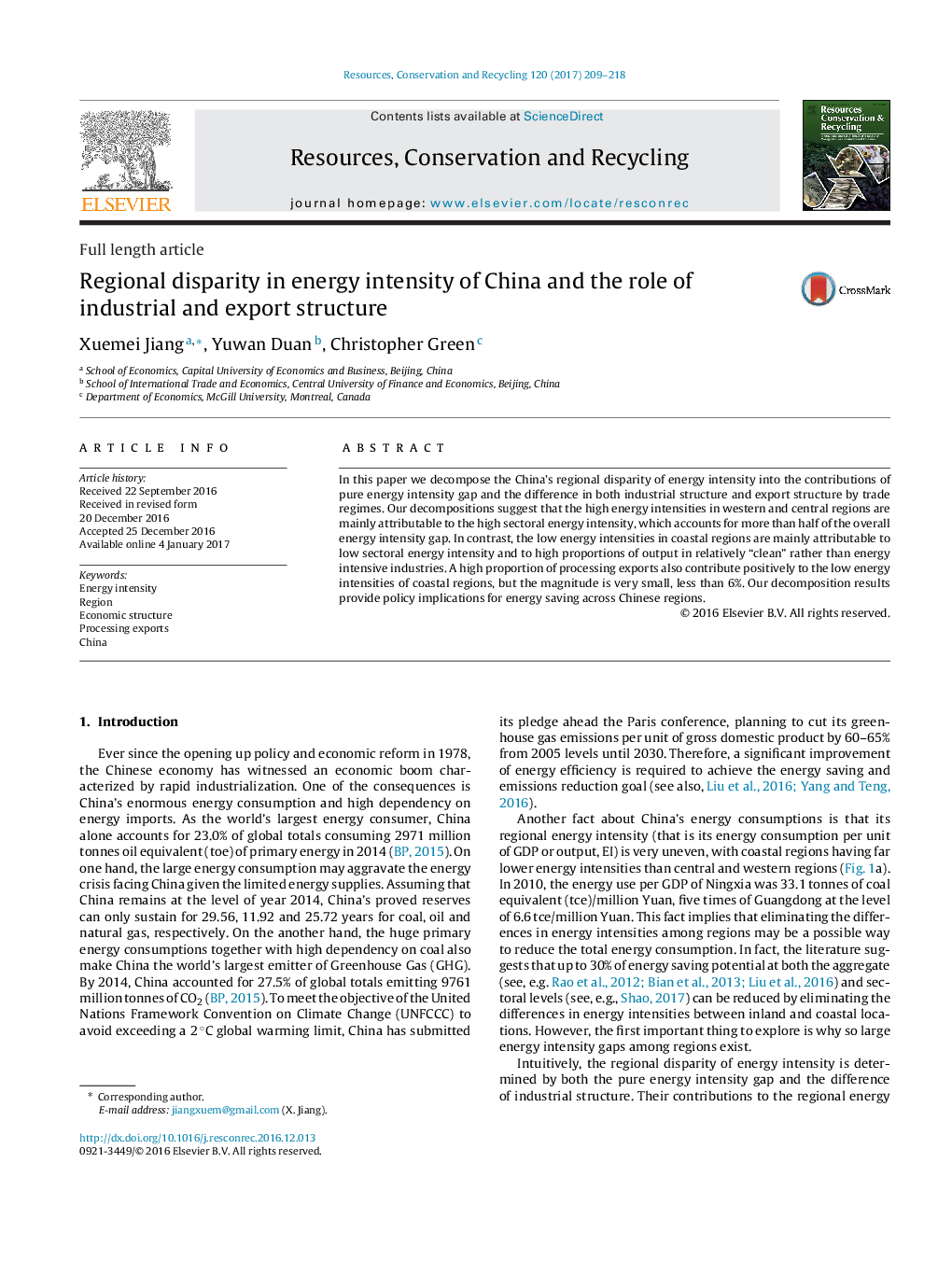| Article ID | Journal | Published Year | Pages | File Type |
|---|---|---|---|---|
| 5118700 | Resources, Conservation and Recycling | 2017 | 10 Pages |
â¢We considered the regional economic structure by industry and by trade regime.â¢Processing exports have lower energy intensities (EIs) than ordinary productions.â¢High proportions of processing exports contributed to less than 6% of the low EIs in coastal regions.â¢The low EIs of coastal regions are mainly attributed to low sectoral energy intensities.â¢The aggregation of industry and trade regime would distort the decomposition results.
In this paper we decompose the China's regional disparity of energy intensity into the contributions of pure energy intensity gap and the difference in both industrial structure and export structure by trade regimes. Our decompositions suggest that the high energy intensities in western and central regions are mainly attributable to the high sectoral energy intensity, which accounts for more than half of the overall energy intensity gap. In contrast, the low energy intensities in coastal regions are mainly attributable to low sectoral energy intensity and to high proportions of output in relatively “clean” rather than energy intensive industries. A high proportion of processing exports also contribute positively to the low energy intensities of coastal regions, but the magnitude is very small, less than 6%. Our decomposition results provide policy implications for energy saving across Chinese regions.
